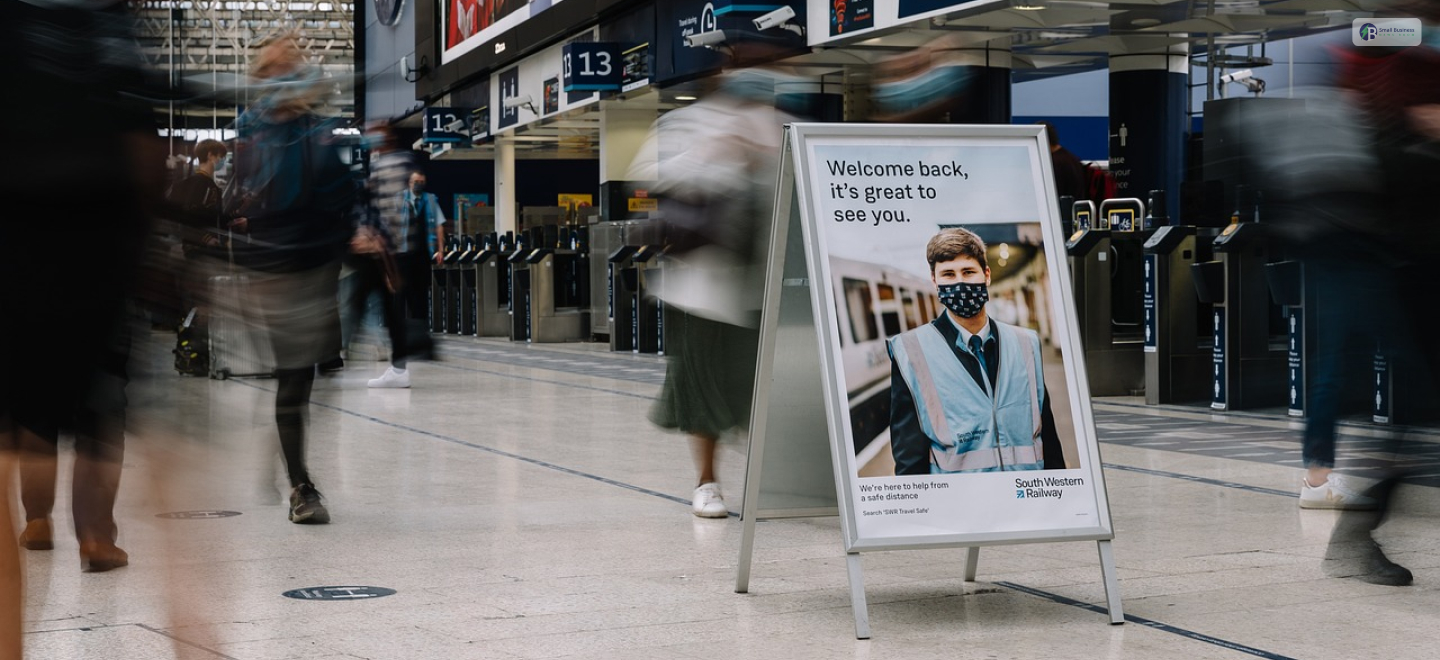Table Of Contents
- The Power Of Elevating Street Furniture In Marketing
- Strategies For Elevating Street Furniture In Marketing
- 1. Use Interactive Elements
- 2. Include Artistic Designs
- 3. Integrate New Technology
- 4. Put More Focus on Sustainability and Eco-Friendliness
- 5. Perform Location-Based Messaging
- Elevating Street Furniture For Marketing: The Way Forward
Elevating Street Furniture: How To Use It For Impactful Marketing?
Last Updated on: November 11th, 2024
Effective marketing strategies have become crucial in today?s highly competitive business landscape. Marketers are constantly searching for innovative ways to capture the attention of their target audience. Also, they want to leave a lasting impression. However, startups often overlook avenues for impactful marketing, such as elevating street furniture.
These seemingly mundane elements of our urban environment can be transformed into powerful marketing tools when leveraged creatively and strategically. With retail stores like Astra Street Furniture, purchasing furniture for your building will be less complicated.
In this article, you will explore the concept of elevating street furniture for impactful marketing. Moreover, you can delve into some compelling examples of how businesses have successfully harnessed this approach. Hence, to learn more, read on to the end of the article.
The Power Of Elevating Street Furniture In Marketing

It is essential to learn the strategies for elevating street furniture for impactful marketing. However, before that, you must understand why street furniture is such a potent medium.
Street furniture refers to a wide range of elements you encounter on the streets. These include benches, bus shelters, kiosks, trash bins, and even public art installations. In fact, these elements are part of our daily lives. Hence, companies strategically place them in high-traffic areas to serve practical purposes for the community.
What makes street furniture a valuable marketing asset is its ubiquity and visibility. These elements are seen by thousands, if not millions, of people daily. When you creatively design and strategically place them, they can turn a mundane object into a memorable brand touchpoint.
Here are some key reasons why street furniture can be a game-changer for marketing:
- High Foot Traffic Areas: Street furniture is typically located in areas with high foot traffic, making it an ideal channel to reach a broad and diverse audience.
- Extended Exposure: Unlike a traditional billboard or online ad that may be viewed for a few seconds, these furniture itemsprovide extended exposure. People sit on benches, wait at bus stops, or walk past kiosks, giving your brand more time to make an impression.
- Local Relevance: Street furniture can be tailored to reflect the local culture and context, making it more relatable to the community it serves.
- Enhanced Visibility:The furniture can stand out and capture attention, even in crowded urban environments. However, you need proper implementation.
Hence, you can see the potential of street furniture in marketing. Now, it?s time to explore some strategies for elevating this medium to create impactful campaigns.
Strategies For Elevating Street Furniture In Marketing

Here are the essential strategies you need if you want to use elevating street furniture for marketing:
1. Use Interactive Elements
Primarily, incorporating interactive elements is one of the most compelling marketing strategies for elevating street furniture. Imagine a bus shelter that goes beyond its conventional role as a simple shelter. Instead, picture a state-of-the-art touchscreen display integrated into the shelter?s design.
This interactive display could engage passersby with captivating content. Also, you can use interactive games or informative presentations about your products and services. Such an approach captures immediate attention and creates a memorable and immersive experience.
On the other hand, imagine a scenario where a commuter waiting for their bus interacts with the touchscreen display. For instance, the commuter is drawn into an engaging virtual world related to the brand. This provides entertainment and allows the brand to communicate its message exciting and impactfully.
Users might play games that subtly incorporate the brand?s products. Or, the user might explore informative content that highlights the brand?s values and offerings.
Hence, with this type of marketing, you can transform mundane furniture into a dynamic and interactive marketing tool. Thereby, you can engage and resonate with the audience.
2. Include Artistic Designs
Street furniture doesn?t have to be practical and mundane. In fact, you can make it a canvas for creativity. Apart from that, you can harness the power of artistic collaborations by partnering with local artists. This way, you can breathe life into your installations.
For example, picture a bus stop that is not just functional but also a stunning work of art. The picture can be a visual masterpiece that stops people in their tracks. This artistic fusion of form and function transforms street furniture into something that captures the essence of the community it serves. After that, it generates buzz and conversation around the brand.
Generally, when brands embrace artistic designs, they state their commitment to the local culture and the community. These artistic installations become a point of pride for the neighborhood. By implementing this, you can create a positive association with the brand.
Moreover, such visually striking designs tend to go viral on social media. This will amplify the brand?s reach and impact. Generally, people want to share and showcase these unique street furniture pieces. This way, they turn them into organic marketing channels.
3. Integrate New Technology
In today?s digital world, street furniture can seamlessly integrate technology. This helps you enhance its functionality and value for the audience.
For instance, consider a bus shelter equipped with Wi-Fi hotspots and charging stations for electronic devices. You can picture QR codes that provide users with exclusive offers or content when scanned.
This integration of technology serves the practical needs of the community. Also, it adds an additional layer of value and engagement.
For instance, a commuter waiting for a ride at a smart bus shelter can access high-speed Wi-Fi. This way, they can become more productive, stream content, or connect to social media while they wait.
Similarly, charging stations offer convenience and alleviate the anxiety of a dying smartphone battery. Brands that leverage these technological features enhance the overall experience for the audience. Thereby, they create positive associations with their products or services.
Consider the potential of strategically placing QR codes on street furniture. Users who scan these codes may unlock exclusive promotions, access immersive augmented reality experiences, or receive instant discounts. This adds value and drives foot traffic and conversions for the brand.
4. Put More Focus on Sustainability and Eco-Friendliness
The world increasingly embraces sustainability and eco-consciousness. Now, the brands have a unique opportunity to positively impact by incorporating sustainable materials into furniture designs.
For example, imagine a bench made from recycled plastic, a bus shelter with solar panels that power its lighting, or a trash bin constructed from eco-friendly materials. With these sustainable choices, you can align with the values of environmentally conscious consumers. Moreover, you can contribute to a positive brand image.
By visibly prioritizing sustainability in their street furniture installations, brands communicate their commitment to a greener future. Such initiatives resonate with consumers seeking eco-friendly alternatives.
Also, they are more likely to support brands that share their values. Additionally, sustainability-focused street furniture can be a visible reminder of the brand?s dedication to environmentally responsible choices.
5. Perform Location-Based Messaging
Leveraging geolocation data is another powerful strategy for elevating street furniture in marketing. Brands can now deliver highly targeted, location-specific messages to audiences near their street furniture installations.
Imagine a scenario where a brand uses geolocation data to identify the presence of potential customers near a bus stop. The brand could then deliver personalized messages or offers directly to the smartphones of those nearby. It encourages them to engage with the brand or visit a nearby store or restaurant.
This approach allows for incredibly precise and contextually relevant marketing campaigns. For example, a coffee shop near a strategically chosen bus stop could send a special discount offer to commuters. By aligning their messaging with the consumer?s current location and situation, brands can increase the likelihood of capturing attention and driving action.
Elevating Street Furniture For Marketing: The Way Forward
Elevating street furniture for impactful marketing is a strategy that can help brands stand out in a crowded advertising landscape. Hence, you can creatively utilize the ubiquity of street furniture and incorporate interactive elements.
Also, you must tailor campaigns to local contexts. This way, you can create memorable experiences that resonate with your target audience.
As you consider your marketing strategies, please pay attention to their power. With creativity and strategic thinking, you can turn everyday objects into influential brand touchpoints that leave a lasting impression on your audience.
So, the next time you pass by a bus shelter or sit on a bench, remember that it might be the perfect canvas for your next marketing masterpiece.
Do you have more suggestions on how to elevate street furniture in marketing operations? Please share your ideas and opinions in the comments section below.
Read also:














